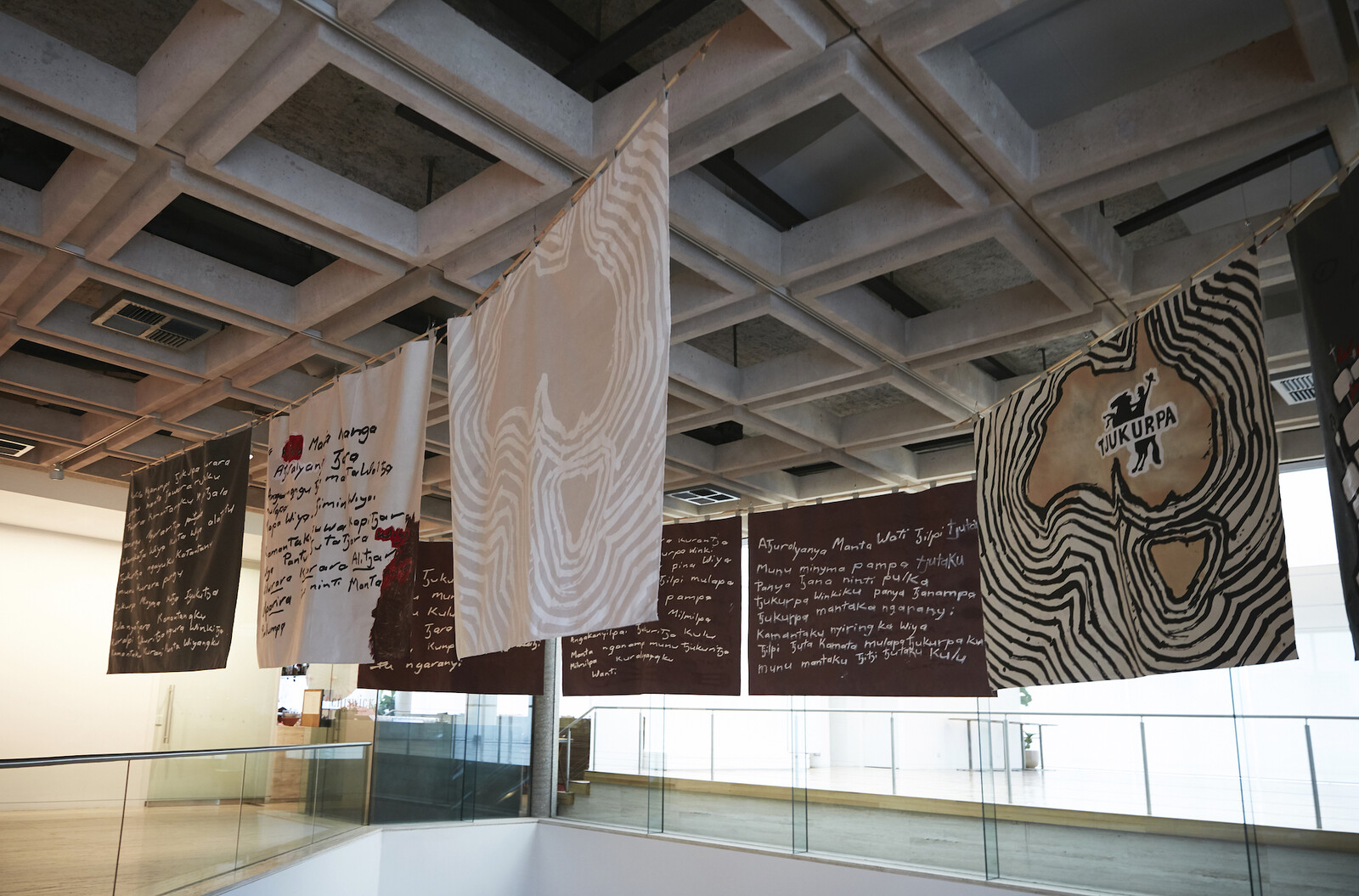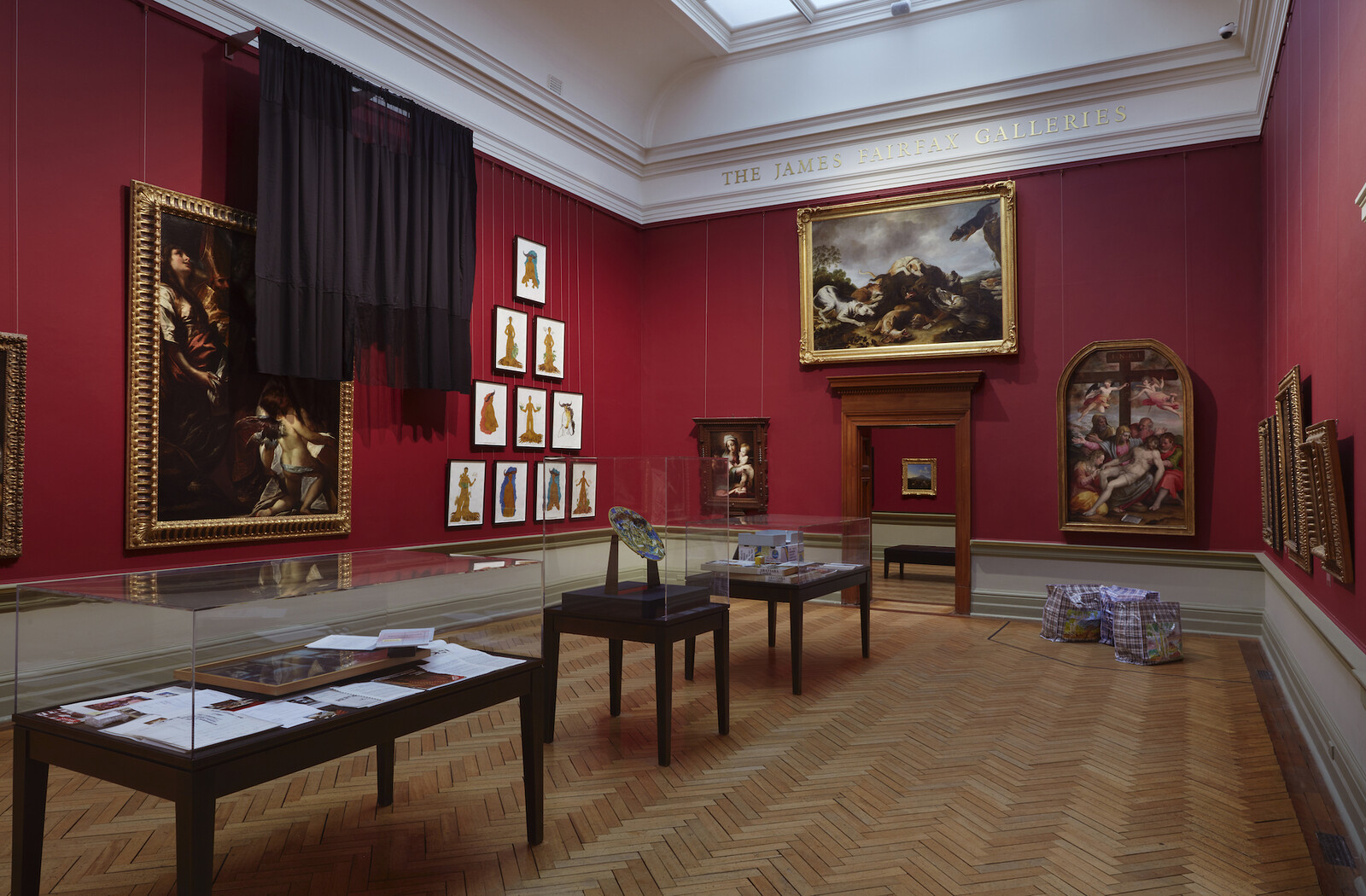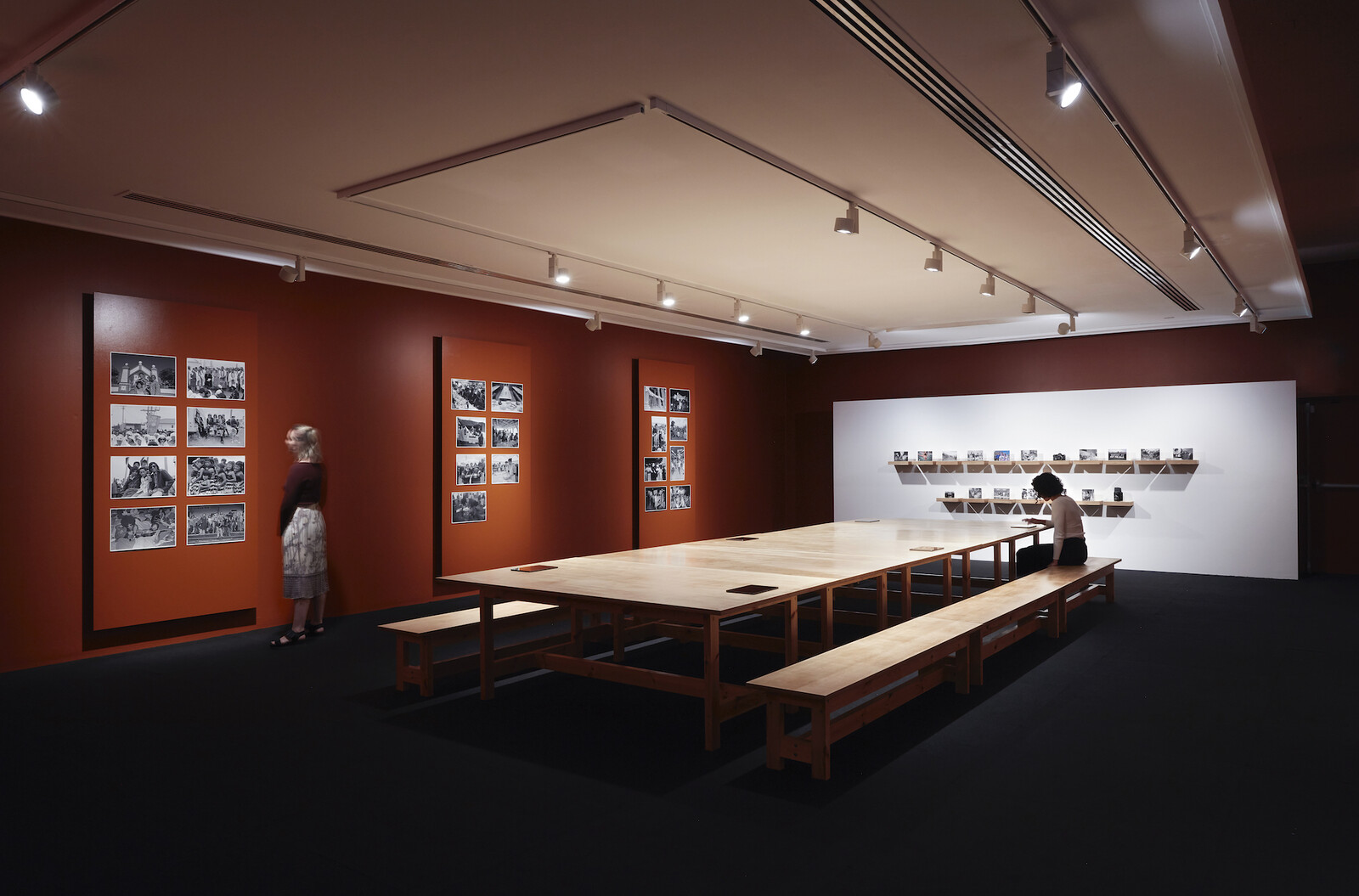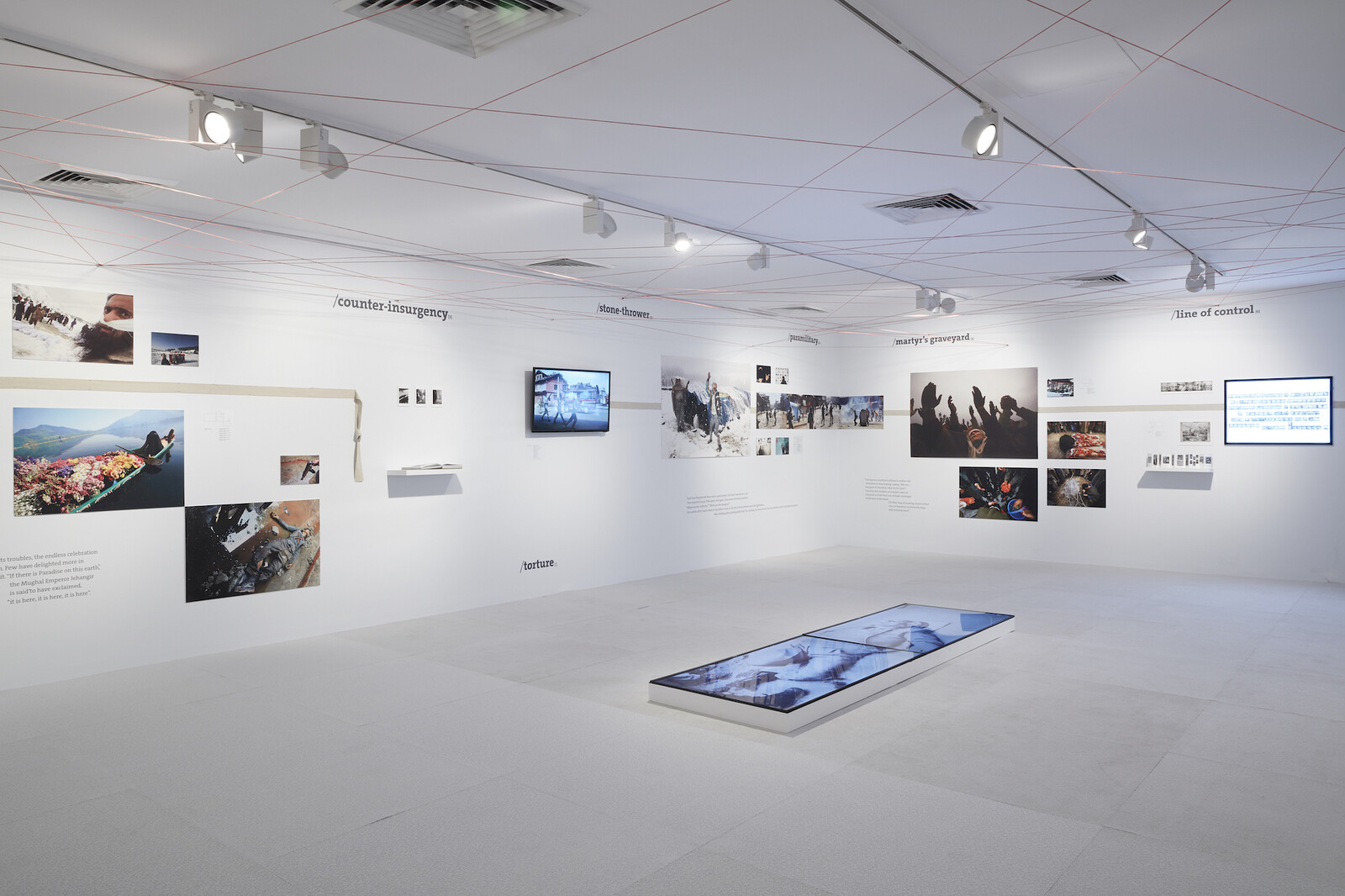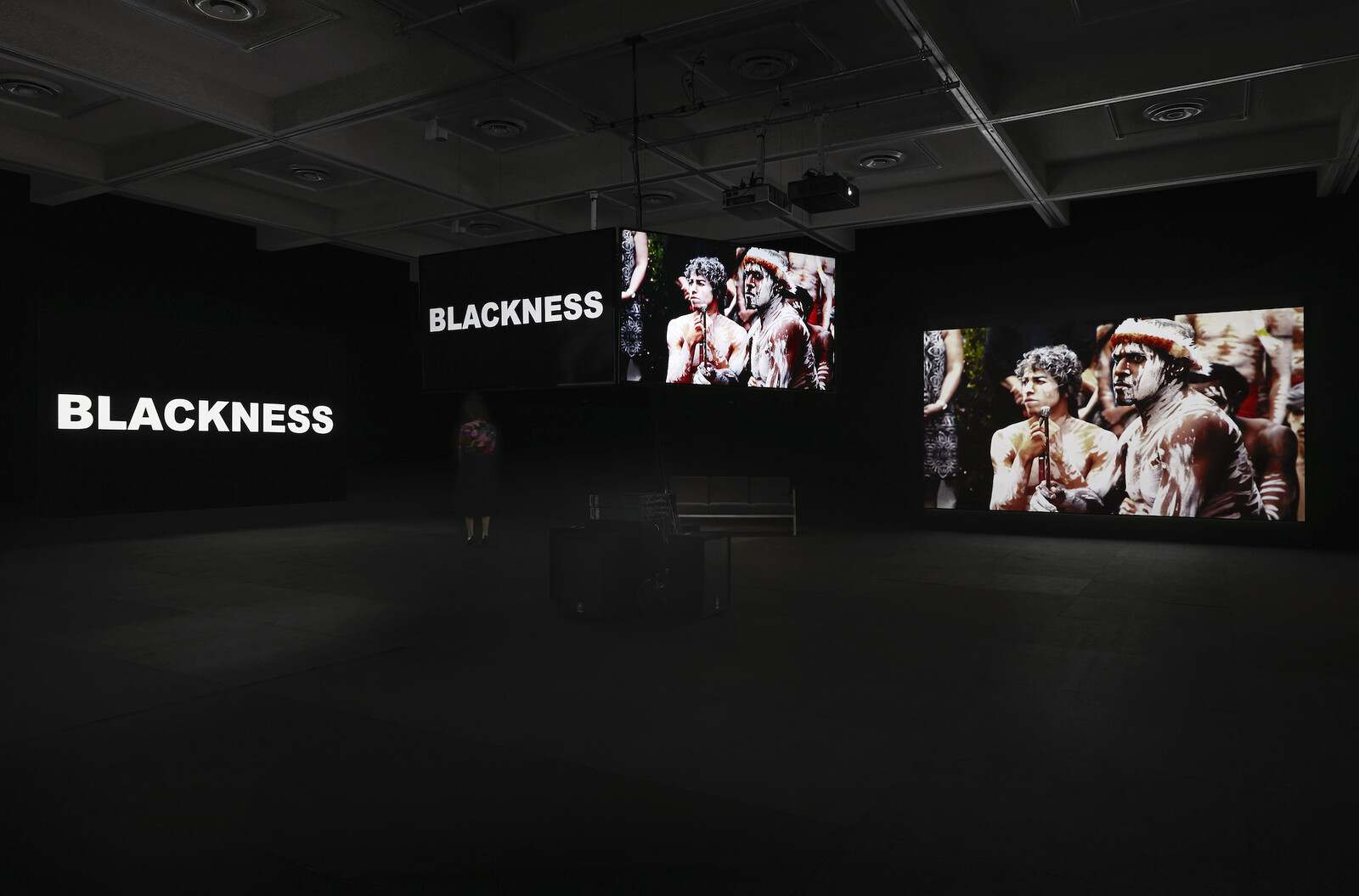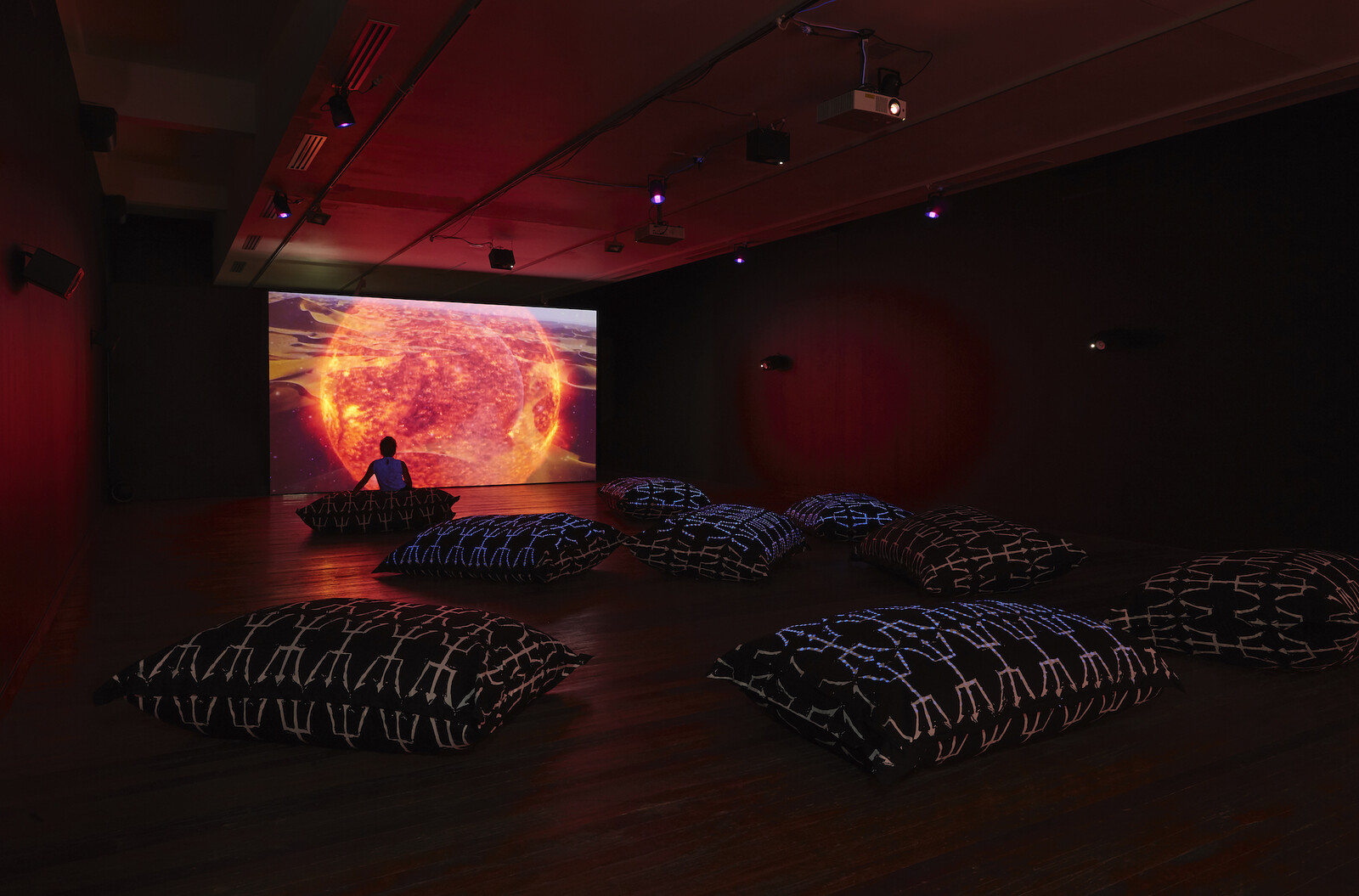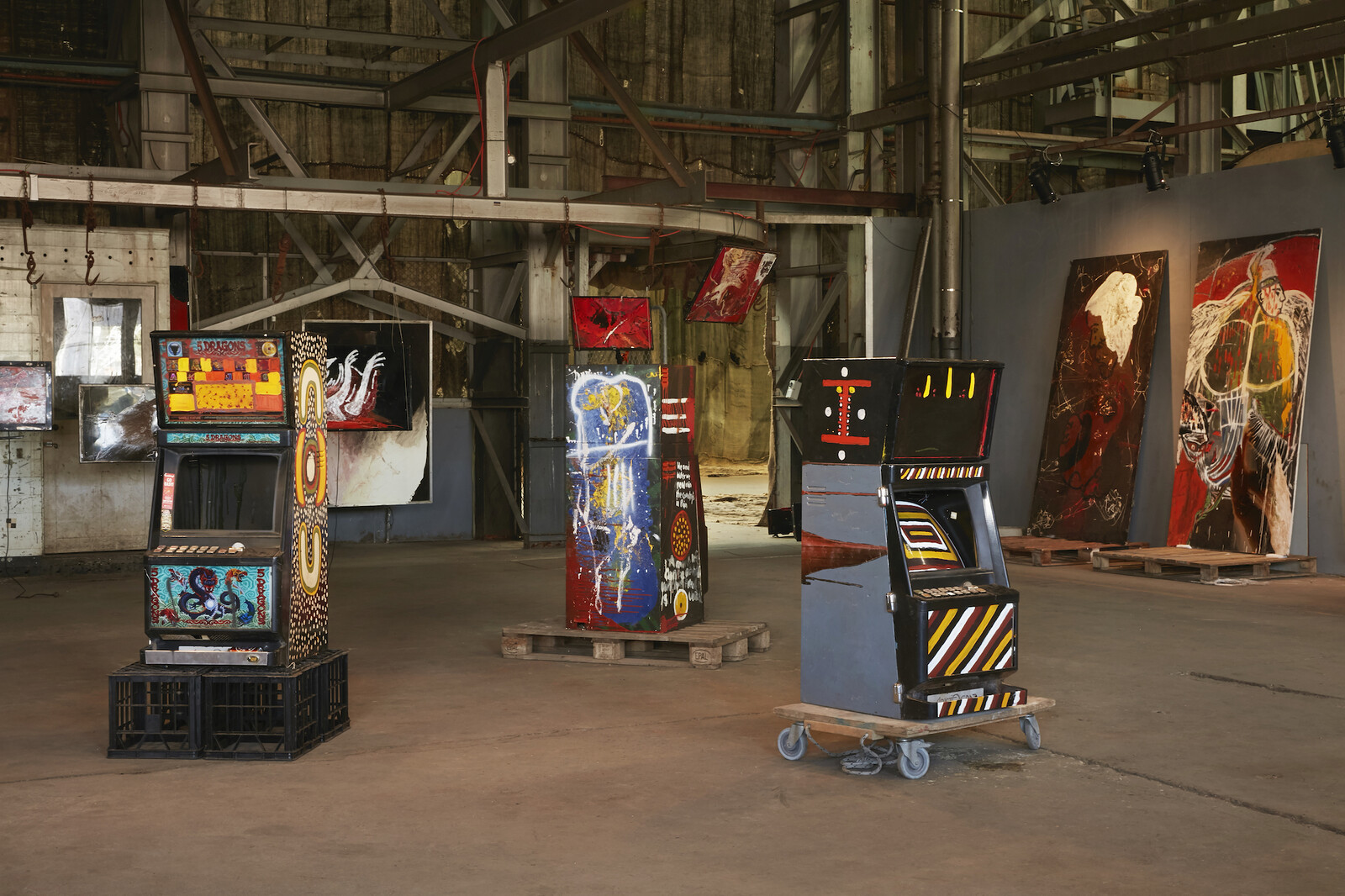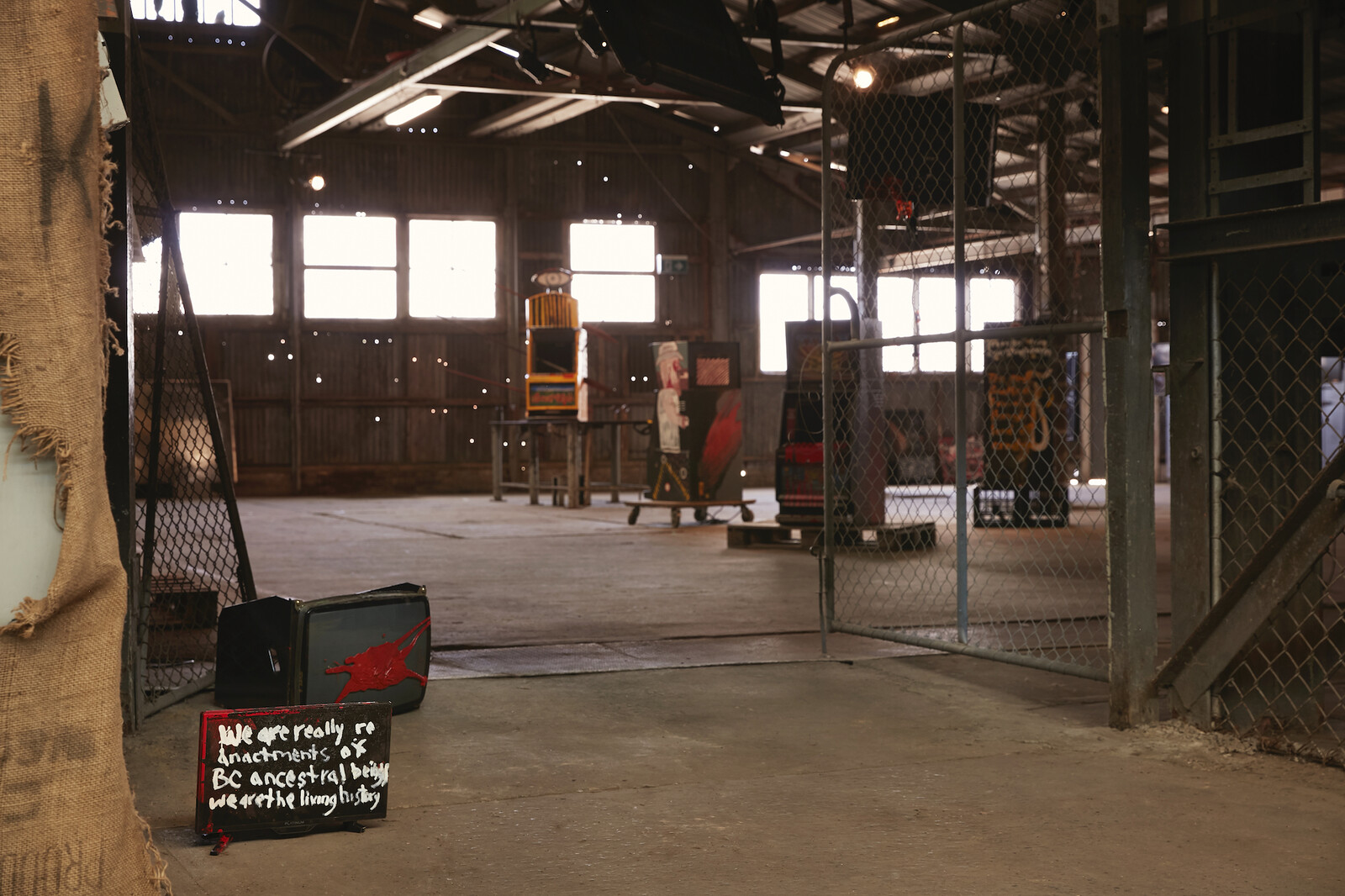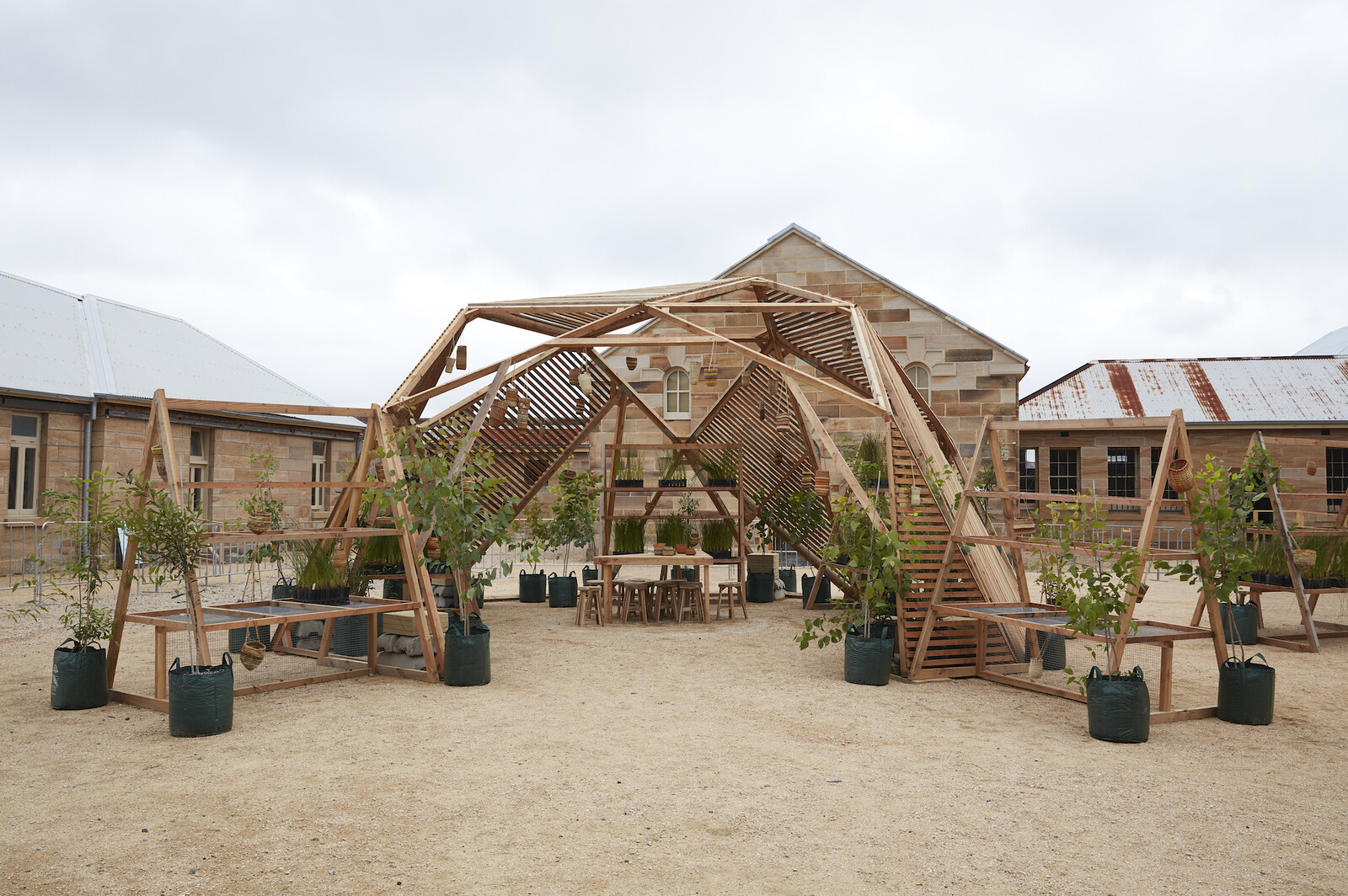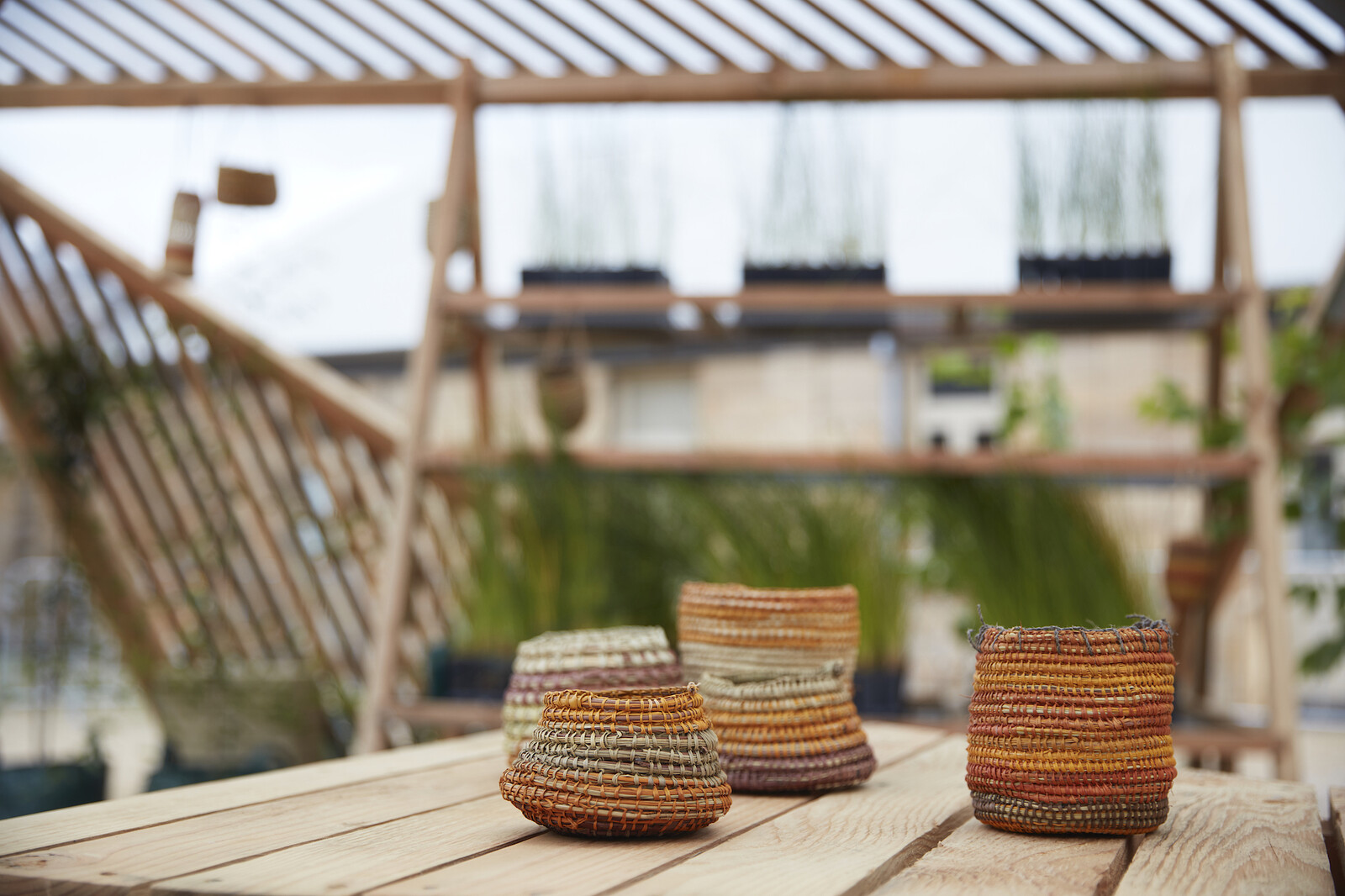March 14–June 8, 2020
Nirin—a word found in the language of the Wiradjuri people, an Aboriginal nation in New South Wales—can be translated as “edge.” The 22nd Biennale of Sydney’s artistic director, Wiradjuri artist Brook Andrew, explains how this concept animates the exhibition: “Nirin is a world of endless interconnected centers; a space to gather and to share, rejoice, disrupt, and re-imagine.” Led for the first time by First Nations artists, this biennale was to be an articulation of Indigenous internationalism, a refusal of the logics of white supremacy, and an assertion of the creativity, generativity, and resistance of First Nations people.
The physical exhibition was to encompass the ancestral lands of the Gadigal people of the Eora Nation, the Boorooberongal people of the Dharug Nation, the Dharawal people, the Bidjigal people, and the Gamaygal people. Its sites—including Cockatoo Island, a convict prison that became a shipyard in the middle of Sydney Harbor, and the Art Gallery of New South Wales, which contains a large collection of colonial artworks—were to be central to a curatorial aim to explore the entanglement of dispossession and resistance that emerges from a colonial world-making project, while the artists involved—Arthur Jafa, Tony Albert, Unbound Collective, Latai Taumoepeau, Sammy Baloji, Club Ate, Jes Fan, and Lisa Reihana, to name a few—would in different ways articulate a global Indigenous solidarity while foregrounding local histories. After 21 Biennales of Sydney without an Aboriginal artistic director, a fact that speaks both to the enduring eurocentrism of Australia’s art establishment and the ongoingness of settler colonialism in this country, this show was to place First Nations’ knowledge and politics at its center, extending deep into the past and towards decolonial futures.1
But the global spread of the Covid-19 pandemic—with its amplification of existing inequalities, border closures, travel bans, and social isolation—meant that we were not able to see the biennale as it was designed to be experienced. Instead, despite living in the same city, the only way that we can now engage with the exhibition is via a website which links to various social media platforms.
Because this transition is happening under exceptional circumstances, and the website was not designed to support this mode of delivery (nor were the social media platforms intended to be central in the exhibition and presentation of the work), this “shift” online is difficult to navigate—and is clearly still being worked out. The rollout of digital content has, so far, included Instagram tours in which an assistant curator, Sebastian Henry-Jones, talks in front of individual works, as well as conversations between Andrew and artists hosted on Facebook Live, virtual tours of venues such as the Museum of Contemporary Art, and downloadable packs of educational resources related to the artists’ work.2
We watched Henry-Jones introduce work by the Iltja Ntjarra (Many Hands) Art Centre, a group of artists from Mparntwe (Alice Springs) who work in the Hermannsburg watercolor tradition pioneered by Albert Namatjira. The watercolors are painted on the cheap, mass-produced storage bags that are ubiquitous in discount shops, and feature political messages—“HOMELESS ON MY HOMELAND,” reads one. As we watched an excerpt of Hannah Catherine Jones’s video installation Owed to Diaspora(s) (2020), which traces African diasporic experience through archival materials and pop-cultural references, shot from inside the gallery, we were conscious of how partial our access to these works was, and how much of art’s affective dimension is lost through being excerpted and (re)mediated.
An exception is the work of Tennant Creek Brio, an art collective from Warumungu country in the Northern Territory, which formed in 2016 as an art therapy program for Aboriginal men.3 The tour of the collective’s work, again led by Henry-Jones on the Biennale’s Instagram channel, begins in the Artspace gallery in east Sydney. An iPhone camera pans the room. We see two flat-screen televisions on the ground leaning against the wall. Both are painted: one with a red and white fish that is smiling yet menacing; the other an abstract painting with all-caps text in thick brush strokes that reads “BOB MARLEY’S T-SHIRT.” We see old poker machines—gambling “games” called “Pot of Gold” or “Indian Dreaming”—resting on top of blue milk crates with some of the panels and screens painted over with thick, textural brushwork, or fine line paintings. We see a portrait of the sovereign, a king with a crown and a scepter, imposing himself on top of a map. The group’s work is captured well by this social media tour, partly because the collective works with repurposed materials and incorporates a meta-discourse around process into the final installation.
The collective deals with the legacy of colonial land expropriation and the uneven distribution of wealth that comes and goes with the rise and fall of pastoral and extractive economies, and the installation brings painting, text, video, and sculpture together in a lively assemblage. Old and new painting techniques are applied to repurposed screens and crates, as well as decommissioned poker machines that also feature embedded video, revealing the collective at work in a kind of parodic, processual documentary. The installation nods to settler-colonial history and its appetite for expansive industries, the centrality of gambling in the myth of the convict or larrikin (as well as, more contemporarily, the correlation of gambling and the Indigenous person in the production of the “myth of the lazy Native”), Bla(c)k diasporic solidarity represented in the figure of Bob Marley, and an intimate community address that emerges in the video.
Over the last month, we have been called on in contradictory ways. On the one hand, we are told we must suspend everyday life in the face of what is extraordinary and “unprecedented”; on the other, we have been expected to be able to continue as before, adapting to the sudden and widespread shift to online-only spaces. This logic has been applied to the arts—already chronically underfunded as a sector in Australia—with many organizations facing shutdowns, program cancellations, and the threat of permanent closure. In response to these conditions, organizations and artists have been compelled to reconceive entire projects.
It is difficult to know how to respond to the paradoxical demand to both stop and keep going. One response involves the refusal to labor towards a seamless or even functional version of “normal.” This response recognizes that there is no simple transition from the gallery to Zoom, for example, nor are there the resources, time, and money to support such transitions in the first place. It recognizes that in a global economic crisis and as austerity measures are rolled out and workers stepped down, the labor required to reimagine “normal” is enormous, and largely unwaged. As is the case of the Biennale’s shift online, such a response may involve a direct and transparent approach to building contingent crisis infrastructures—infrastructures that lay bare the ad hoc decisions, compromises, and limitations that accompany the attempted replacement of being together in time and space, and experiencing a direct, intimate encounter with materials, environments, textures, and each other.
When we looked through the Biennale website and clicked all the links to access the “online” exhibition, and when we realized that rather than large-scale documentation or embedded video works there were Instagram-published videos shot in portrait mode on a smartphone, we weren’t disappointed or unsatisfied. We felt instead the gap between the exhibition and our mediated experience of it, and the eeriness of seeing spaces organized for social encounters and learning lie empty. We felt the weight of expectation on Henry-Jones, and the discomfort apparent in the reorientation of his labor towards host, guide, proxy, teacher. We felt a strange version of desire, a kind of pre-emptive loss or displacement, as we looked at works together on our couch and imagined the time we’d otherwise spend with them, constructing fantasies of the videos in full, or making quick sketches of rooms in galleries from memory.
In this moment of intensive global reorientation, it is important to remember and learn from the histories of mutual aid and the continued struggles for sovereignty and justice that First Nations people have led for generations. And while we cannot, so far, stand on Cockatoo Island or inside Campbelltown Arts Centre, cannot wander through the city and inhabit the spaces where the many works of the biennale sit, installed and ghostly, we are grateful to study the small traces that have been made and shared, and we acknowledge that which cannot be captured or reproduced.
The exhibition is organized around seven themes, which, in keeping with its overarching theme, are drawn from Wiradjuri concepts: BILA (River: Environment); GURRAY (Transformation); MURIGUWAL GIILAND (Different Stories); NGAWAAL-GUYUNGAN (Powerful-Ideas: The Power of Objects); DHAAGUN (Earth: Sovereignty and Working Together); YIRAWY–DHURAY (Yam-Connection: Food); and BAGARAY-BANG (Healing).
https://www.biennaleofsydney.art/learn/learning-resources/.
Tennant Creek Brio has expanded over the past four years, and now comprises Rupert Betheras, Fabian Brown, Marcus Camphoo, Jimmy Frank (Jupurrula), Lindsay Nelson, Clifford Thompson, Joseph Williams, and Simon Wilson.


